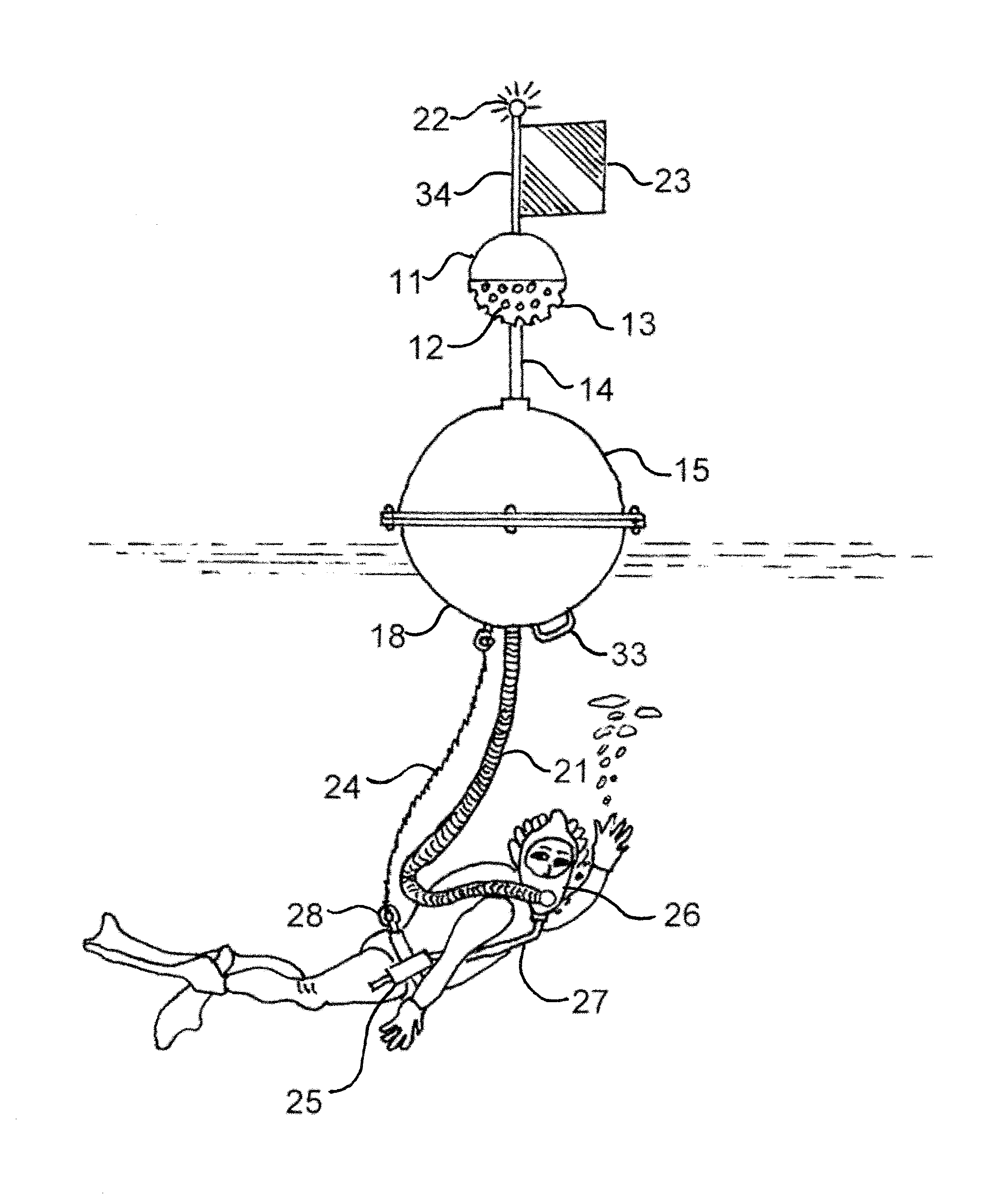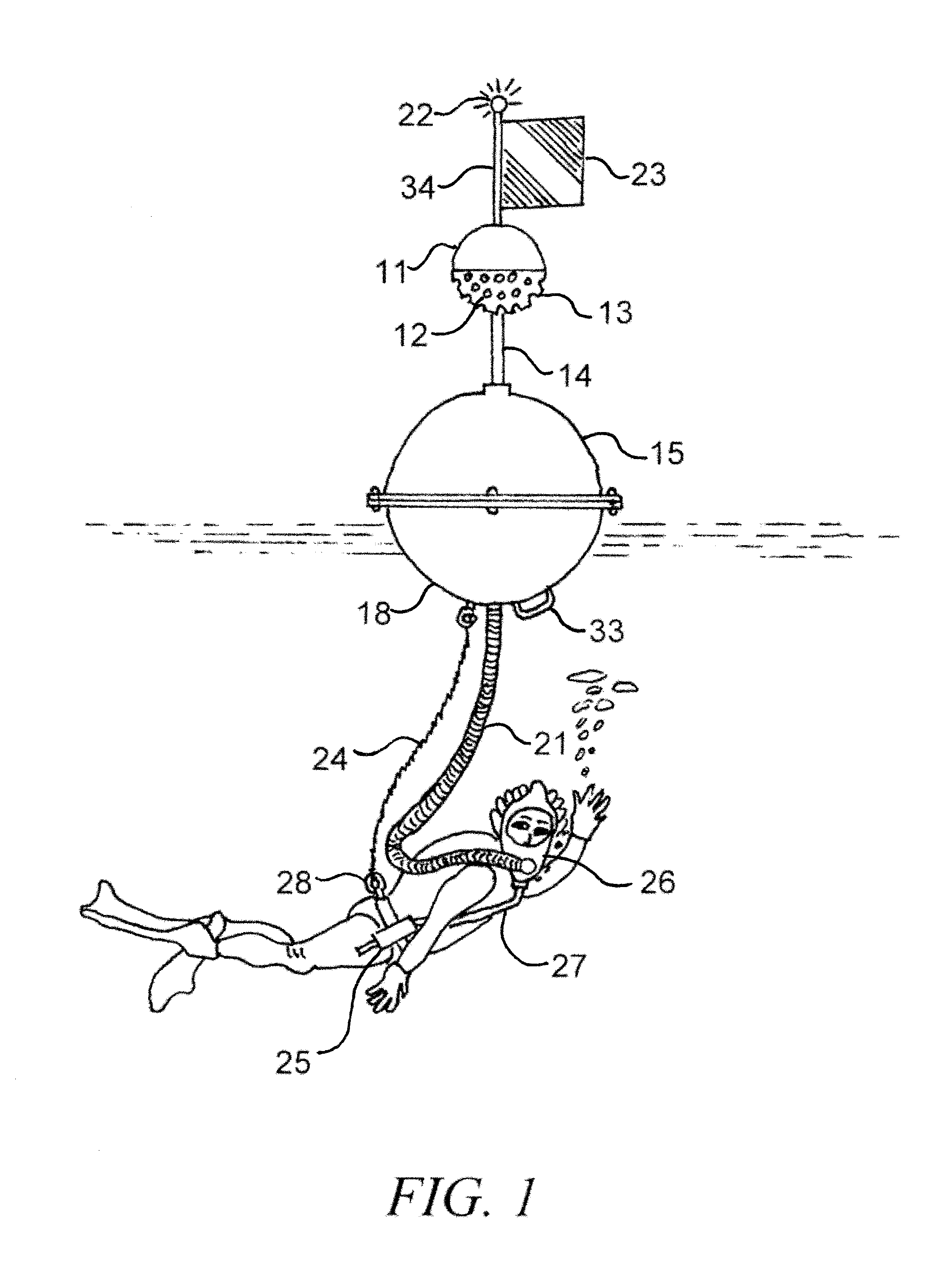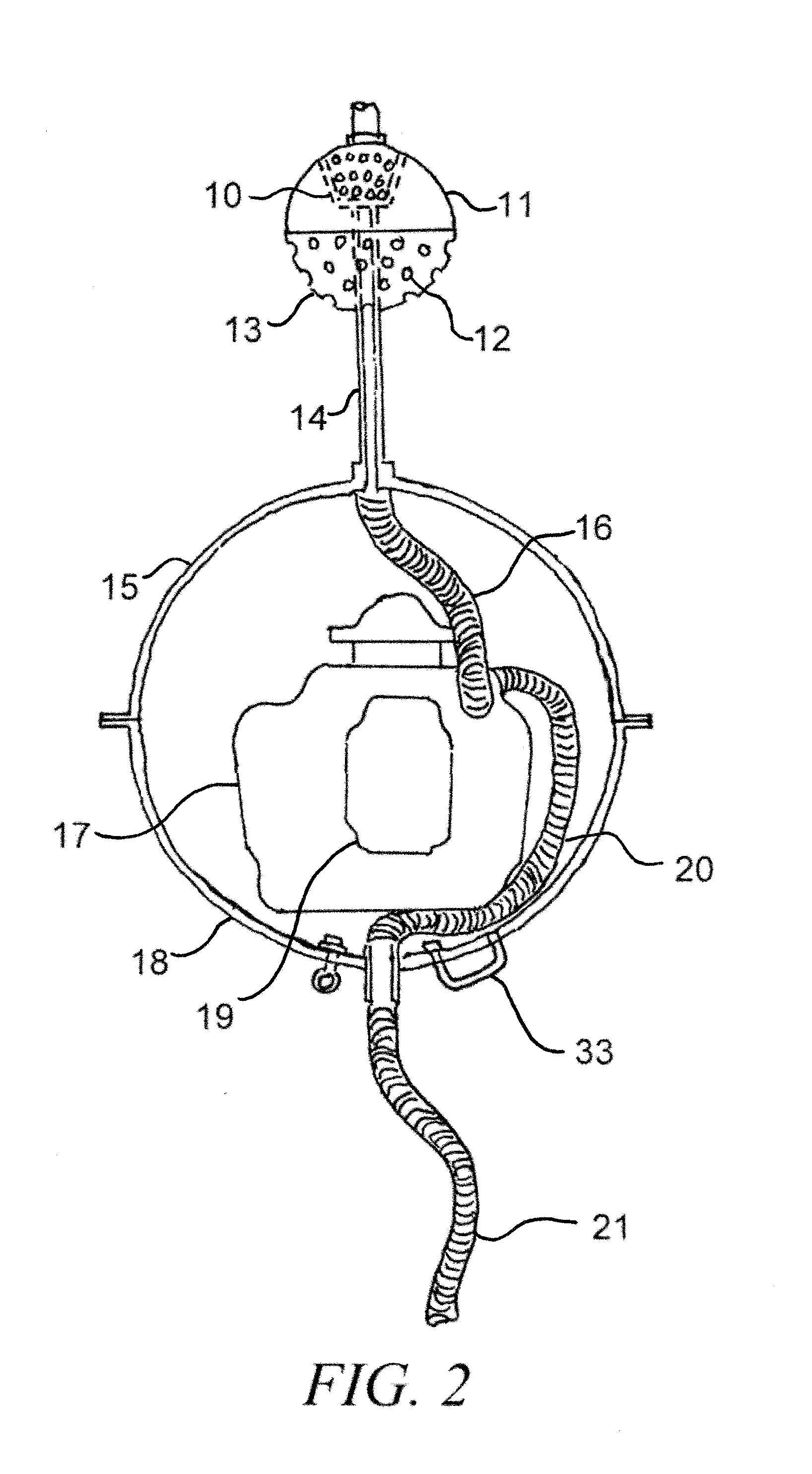Underwater Breathing Apparatus
- Summary
- Abstract
- Description
- Claims
- Application Information
AI Technical Summary
Benefits of technology
Problems solved by technology
Method used
Image
Examples
Embodiment Construction
[0022]With reference to FIG. 1 thereof, herein shall be described a new underwater breathing apparatus embodying the principles and concepts of the present invention and generally designated by the reference numeral 1. More specifically it will be noted that FIG. 1 comprises a sealed, hollow buoyant sphere in two parts, the bottom half 18 and the top half 15. The top half 15 is removable to access the inside of the sphere. Both parts 15 and 18 are connected and sealed during normal use. The buoyant sphere supports and is connected to an air intake pipe 14. Mounted on the air intake pipe 14 is a two part air intake sphere. The air intake sphere bottom 13 is attached to the air intake sphere top 11. The bottom half of the air intake sphere 13 has holes 12 that allow air into the air intake sphere and drain water out of the air intake sphere. Connected to the top of the air intake sphere 11 is a hollow shaft 34. Attached to the hollow shaft 34 is a flag 23. Connected to and mounted on ...
PUM
 Login to View More
Login to View More Abstract
Description
Claims
Application Information
 Login to View More
Login to View More - R&D Engineer
- R&D Manager
- IP Professional
- Industry Leading Data Capabilities
- Powerful AI technology
- Patent DNA Extraction
Browse by: Latest US Patents, China's latest patents, Technical Efficacy Thesaurus, Application Domain, Technology Topic, Popular Technical Reports.
© 2024 PatSnap. All rights reserved.Legal|Privacy policy|Modern Slavery Act Transparency Statement|Sitemap|About US| Contact US: help@patsnap.com










